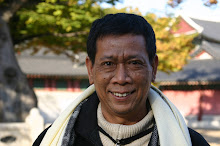Maman S. Mahayana
Relationship between novel and philosophy in the modern Indonesian novel is heavily influenced by the western philosophy, particularly existentialism. In this case, Iwan Simatupang, can be called as a pioneer, although Djamil Suherman’s role in Perjalanan ke Akherat (1963), viewed from Islamic Philosophy Islam, could not be undermined. Besides, Nasyah Djamin in Hilanglah Si Anak Hilang (1963) dan Gairah untuk Hidup dan untuk Mati (1968), actually tried to express his eksistensialism. However, the philosophical colour seems to be manifested in the characters of Iwan Simatupang’s novels.That is why, he can be regarded as the pioneer. Then we have the senior novelist, Alisjahbana, who appears through his three-volume thick novel , Grotta Azzura (1970-1971). However, as previously explained, Alisjahbana could not hold his own voice. As a result, the philosophy dialog really look like the monologue of the writer.
Such condition is different with Khotbah di Atas Bukit (1976) by Kuntowijoyo in which as a whole does not show the preach of the writer. The main character of the novel only preach for himself facing death. Hence, the death is not a problem, but a reality. So, the most important thing is the “preach” for humanity, which is in Ziarah, a novel by Iwan Simatupang, is called the pilgrimage to humanity. The most surprising is the emergence of Motinggo Busye’s novel , Sanu Infinita Kembar (1958). Being “trapped” for a long time in writing popular novel for commercial purpose, Busye suddenly presented Islamis philosophy. Although it was not a smooth utterance, and therefore it is not a saturated expression, this novel becomes a good start for his “purgation”.
Other novel who tried to match the Javanese and Western philosophy is Sindhunata’sl Anak Bajang Menggiring Angin (1984). Nevertheless, the novel which is somewhat slow in its narration has participate in enriching the philosophical content for the Indonesian modern literature. The other novel which also enrich philosophical content is the one of Budi Darma, Rafilus (1988), after he previously produced similar novel, Olenka (1983). The most interesting thing in Budi Darma’s novel, particularly Rafilus, is his effort in the creation of the contradictory world. The contradictory statement became the element of this novel construction. The first novel by Umar Kayam (1992), is also actually full of Javanese philosophy. In this case, Umar Kayam tend to raise the local philosophy which he knows well (see the Para Priyayi discussion
In this case, Indonesian literary map shows the heterogeneity. And it is deeply influenced by the socio-cultural background of the writer. Considering that our nation belongs to the multi-ethnic and heterogeneity, the novels will be the never ending inspiration to be exploited as the materials for our writer. The problem lies on the ability of the writers to take the advantage of the cultural heritage to be revealed in the more meaningful work. Through the work, however, a writer express his freedom to interpret and give the meaning of his own cultural spirit.
Langganan:
Posting Komentar (Atom)


Tidak ada komentar:
Posting Komentar